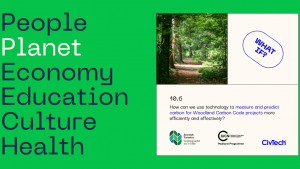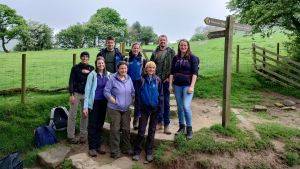The UK’s first collaborative Peatland Strategy has been launched today, setting out a shared vision for a brighter future for our vital, but damaged peatlands. In developing the strategy, the IUCN UK Peatland Programme has involved stakeholders from across Government, third sector, scientific and land managing communities. All are coming together to celebrate this momentous step forward in the conservation of UK peatlands and to discuss implementation of the strategy to bring about positive change at an event in York.
Dr Emma Goodyer, strategy lead and Programme Manager of the IUCN UK Peatland Programme said:
“Collaborative action to bring about healthy peatlands is essential if we are to achieve the landscape-scale change required. That is why it was important to develop this strategy as a collective spanning across those involved in their management. Only by working with others towards a shared vision will we be able to realise our target of two million hectares of peatlands in healthy condition by 2040, and so ensure benefits not just for the animals and plants that depend on them, but for society as a whole.”
Peatlands are among the most valuable ecosystems on Earth. Occupying just 3% of the Earth’s land surface, peatlands are our largest carbon store on land. They provide clean water and food, and can act as buffers for environmental disasters, such as flooding. They are also globally significant for wildlife.
Whilst our knowledge of this habitat continues to improve, there is clear scientific evidence of the often immediate benefits to be gained for water, climate change, wildlife and land management. Only healthy, functioning peatlands can deliver these benefits.
Stuart Brooks, Chair of the IUCN UK National Committee said:
“Although almost all peatland habitats in the UK are degraded – and require urgent action – the country has been world leading in its strategic approach to peatland conservation, recognising and stepping up to the challenge.”
The UK Peatland Strategy encompasses all peatlands in the United Kingdom. It sets the context for action led by the devolved administrations’ in England, Scotland, Wales and Northern Ireland and recommends six goals to achieve change:
- Conserve, restore and enhance the best peatlands
- Restore damaged peatlands to functioning ecosystems
- Adapt management of drained peatlands
- Sustainably manage healthy peatlands with compatible land uses
- Maintain a programme to oversee progress against strategic goals
- Communicate value of peatlands to a wide audience.
Jonathan Hughes, Chief Executive of Scottish Wildlife Trust and IUCN Global Councillor said:
“Partnerships across the country have effectively delivered peatland restoration, often on a large-scale. Yet this work has barely scratched the surface of what is required. The UK Peatland Strategy gives us a blueprint to expand their successes into more challenging areas and for the long term.”
For more information on the IUCN UK Peatland Programme please visit our website. You can also download a copy of the Strategy.










